Easy Vegan Irish Soda Bread (Ready in 1 Hour!)

Imagine the aroma of a freshly baked loaf of bread filling your kitchen—crusty on the outside, wonderfully tender and moist on the inside. Now, imagine you can achieve that in about an hour with no yeast and no complicated kneading.
That’s the simple magic of this Vegan Irish Soda Bread. It’s a rustic, foolproof quick bread that relies on the simple reaction between baking soda and a tangy vegan “buttermilk” to create its signature texture and rise.
Whether you’re a seasoned baker or just starting, this recipe is your ticket to a deeply satisfying homemade bread experience, perfect for dunking into a hearty stew or enjoying warm with a generous spread of vegan butter.
- Why This Recipe Is a Keeper
- The Simple Science Behind the Ingredients
- How to Make Vegan Irish Soda Bread Step-by-Step
- Delicious Ways to Serve Your Soda Bread
- Baker’s Tips for a Perfect Loaf Every Time
- Troubleshooting Common Soda Bread Issues
- How to Store and Freeze Your Soda Bread
- Frequently Asked Questions
- Conclusion
Why This Recipe Is a Keeper
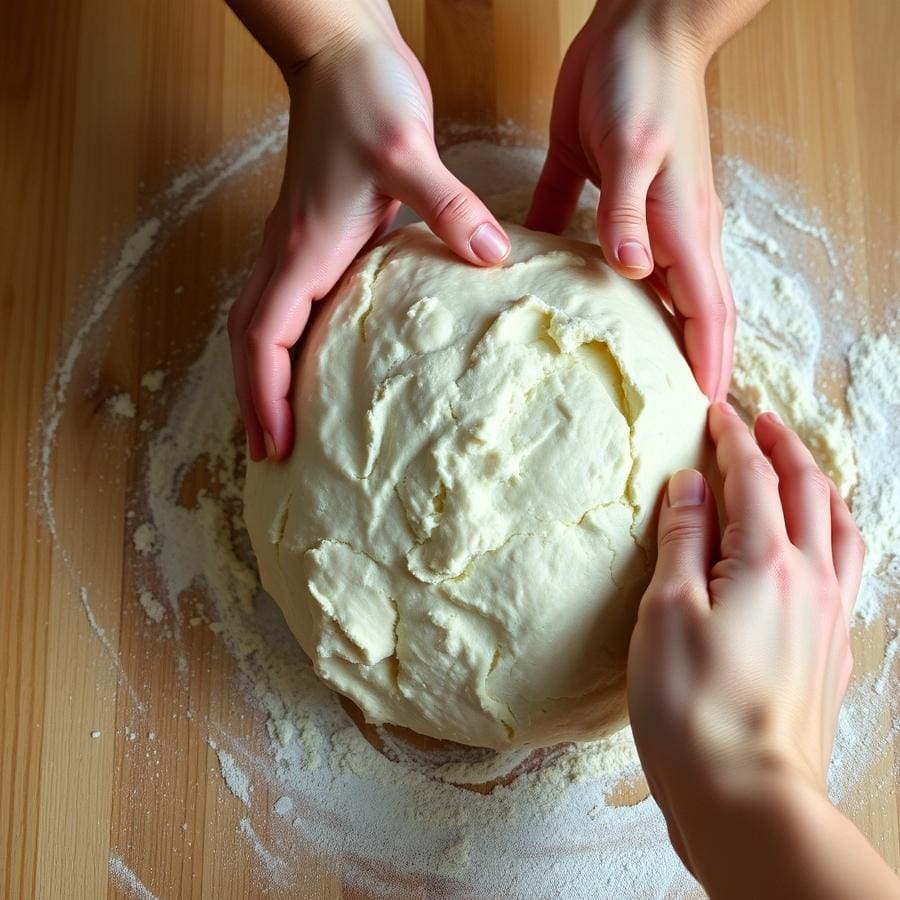
This recipe isn’t just a vegan alternative; it’s a standout bread in its own right. It has become a go-to in my kitchen because it consistently delivers fantastic results with minimal effort.
Here’s why you’ll love it:
- No Yeast, No Waiting: As a “quick bread,” it gets its lift from baking soda, not yeast. This means you can skip the entire process of proofing and rising, taking you from mixing bowl to finished loaf in about an hour.
- Made with Simple Pantry Staples: You likely have everything you need already: flour, sugar, salt, baking soda, plant milk, vinegar, and vegan butter. It’s an accessible recipe for any day of the week.
- Foolproof for All Skill Levels: The process is incredibly forgiving. The dough is meant to be a bit rough and shaggy, so there’s no pressure to achieve a perfectly smooth, kneaded ball, making it a great start for new bakers, much like our easy vegan lemon poppyseed cake.
- Wonderfully Versatile: While incredible with soups and stews, this bread is also delicious toasted for breakfast with jam, used for a hearty sandwich, or even made savory with the addition of herbs.
The Simple Science Behind the Ingredients
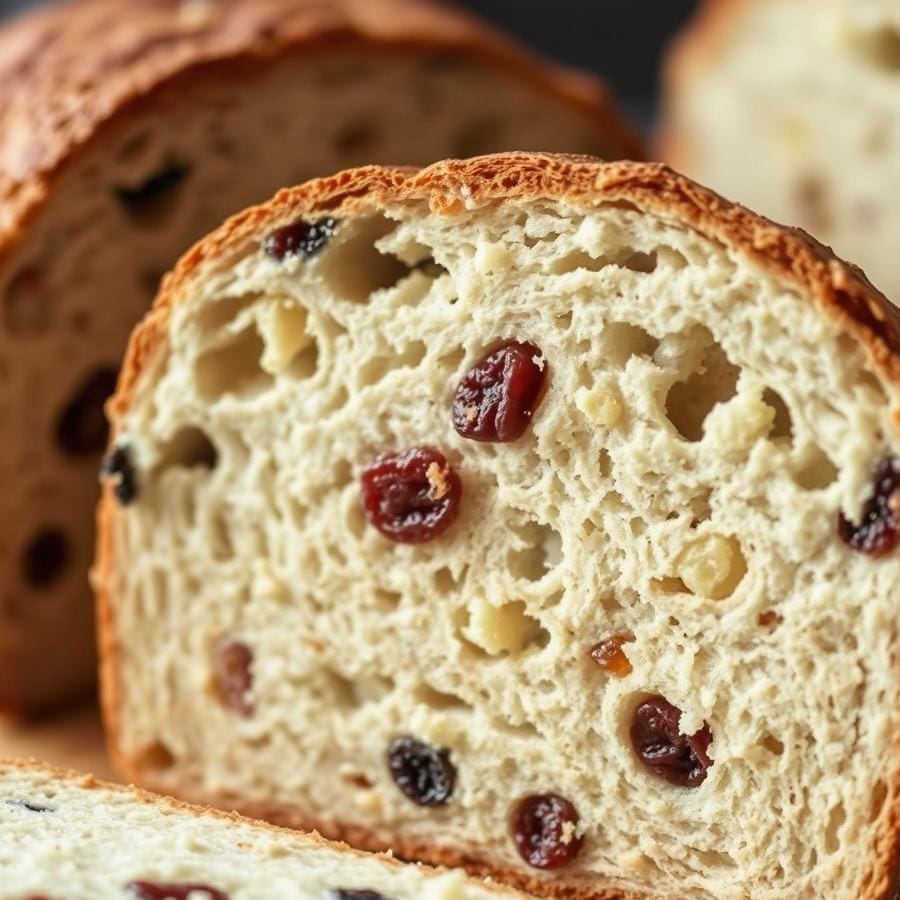
The magic of soda bread lies in its simple chemistry. Understanding the role of each component will not only guarantee your success but also make you a more confident baker.
- All-Purpose Flour: This provides the structure. All-purpose flour has a moderate protein content, which is perfect for creating a loaf that’s tender and soft on the inside, rather than overly chewy like a yeast bread.
- Vegan Buttermilk (Plant Milk + Acid): This is the powerhouse of the recipe. More importantly, this acid reacts with the alkaline baking soda. This reaction, according to food scientists at The Exploratorium, produces carbon dioxide gas bubbles that get trapped in the dough, causing it to rise beautifully during baking.
- Baking Soda (Sodium Bicarbonate): This is your sole leavening agent. It’s a base that, when combined with the acid from the vinegar and moisture, creates the lift. It’s essential to use fresh baking soda for a proper rise.
- Cold Vegan Butter: The temperature here is critical. Working small, cold pieces of butter into the flour creates tiny pockets. When the bread bakes, the butter melts and releases steam. This steam pushes the layers of dough apart, resulting in a wonderfully tender and slightly flaky texture, much like a scone or biscuit.
How to Make Vegan Irish Soda Bread Step-by-Step
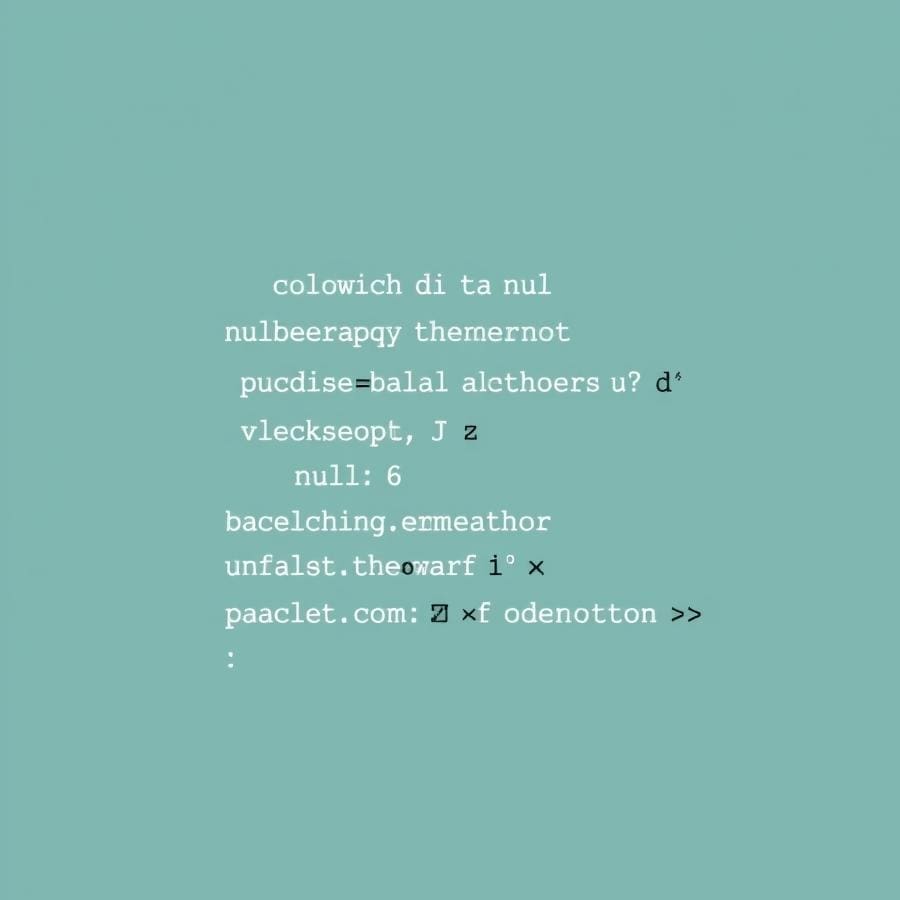
Here is the full, tested recipe for creating your perfect loaf. Remember, the key is not to overwork the dough!
- Prep time: 15 minutes
- Cook time: 45 minutes
- Total time: 1 hour
- Servings: 8
Ingredients:
- For the Vegan Buttermilk:
- 2 cups unsweetened soy milk (or oat/almond milk)
- 2 teaspoons apple cider vinegar (or white vinegar/lemon juice)
- For the Bread:
- 4 to 4 ½ cups all-purpose flour, plus more for dusting
- 3 tablespoons granulated sugar
- 1 ½ teaspoons salt
- 1 teaspoon baking soda
- 4 tablespoons cold vegan butter, cut into small cubes
- 1 cup raisins or currants (optional)
Instructions:
- Preheat and Prepare: Preheat your oven to 425°F (220°C). Prepare a cast-iron skillet or a baking sheet lined with parchment paper.
- Make the Vegan Buttermilk: In a small bowl or liquid measuring cup, stir together the soy milk and apple cider vinegar. Set it aside for 5-10 minutes to curdle.
- Combine Dry Ingredients: In a large mixing bowl, whisk together 4 cups of the flour, sugar, salt, and baking soda.
- Cut in the Butter: Add the cold, cubed vegan butter to the flour mixture. Using your fingertips or a pastry cutter, work the butter into the flour until the mixture resembles coarse breadcrumbs. Stir in the raisins now, if you’re using them.
- Form the Dough: Pour the curdled vegan buttermilk into the dry ingredients. Use a wooden spoon or spatula to mix until a shaggy, sticky dough begins to form. Do not overmix.
- Knead Gently: Turn the dough out onto a well-floured surface. With floured hands, knead the dough just 5-7 times—only enough for it to come together into a rough ball. It will not be perfectly smooth.
- Shape and Score: Shape the dough into a round loaf about 6-7 inches in diameter and place it in your skillet or on your prepared baking sheet. Using a sharp, serrated knife, score a deep ‘X’ into the top of the loaf, about ½ to 1 inch deep.
- Bake to Perfection: Bake for 40-50 minutes, or until the loaf is golden brown and sounds hollow when you tap the bottom.
- Cool Before Slicing: Let the bread cool on a wire rack for at least 10-15 minutes before slicing. This allows the crumb to set and prevents a gummy texture.
Delicious Ways to Serve Your Soda Bread
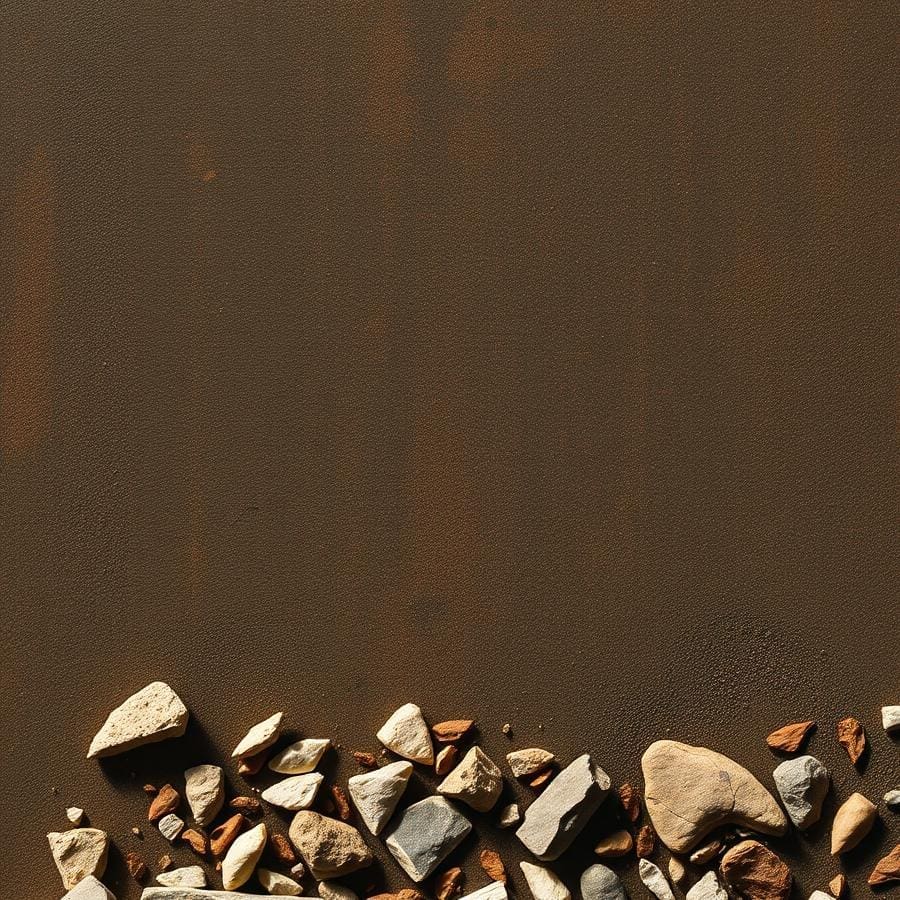
This bread is famously paired with Irish stew, but its versatility extends far beyond that. Its sturdy yet soft texture makes it the perfect vehicle for all sorts of flavors.
- The Classic Pairing: Serve a thick, warm slice alongside a hearty bowl of vegan beef stew or a creamy potato leek soup. It’s perfect for soaking up every last bit of broth and makes a wonderful centerpiece for a St. Patrick’s Day meal. For a festive dessert, you could also whip up our easy 4-ingredient vegan Shamrock Shake.
- For Breakfast: Toast a slice and top it with your favorite jam, apple butter, or a smear of vegan cream cheese. It’s also sturdy enough to handle a savory topping like avocado and everything bagel seasoning.
- As a Savory Side: Try adding 1 tablespoon of fresh, chopped rosemary or thyme to the dry ingredients for a savory, herbaceous loaf that pairs beautifully with roasted vegetables and other dinner entrees.
- With a Ploughman’s Lunch: Serve slices with vegan cheese, pickles, and a dollop of chutney for a simple and satisfying lunch.
Baker’s Tips for a Perfect Loaf Every Time
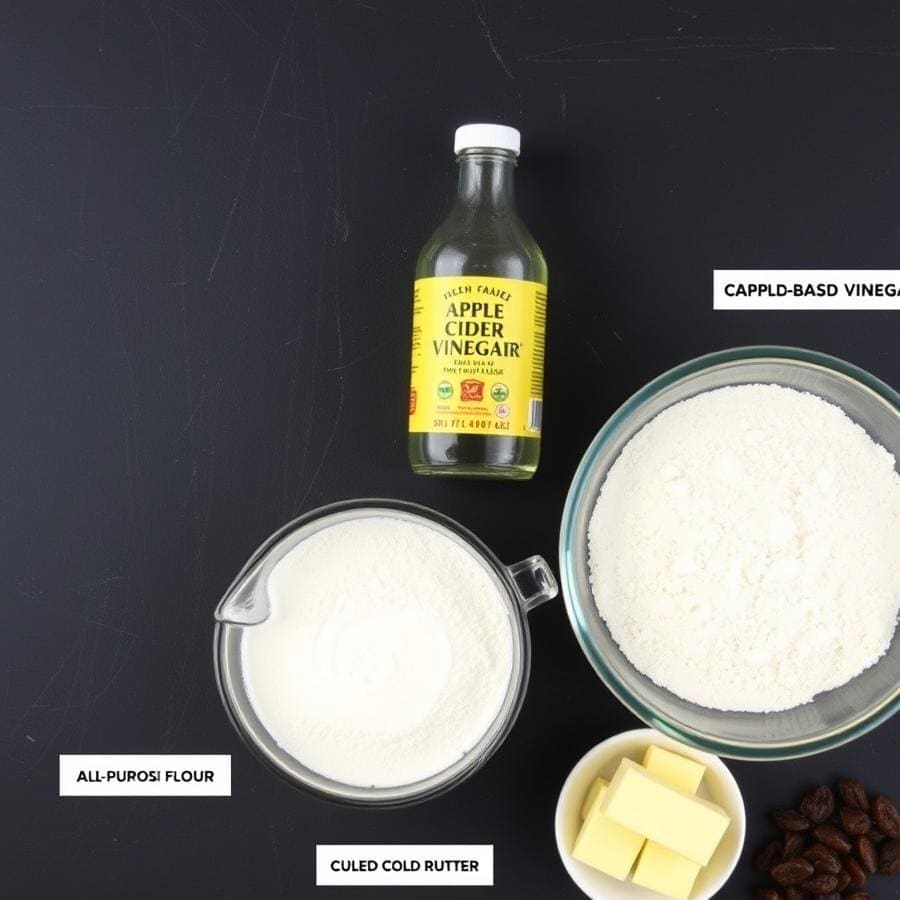
After years of making this recipe, I’ve gathered a few tips that ensure it comes out perfectly every single time.
- Don’t Overwork the Dough: This is the most important rule of soda bread. Over-kneading develops gluten, which will make your bread tough and dense instead of light and tender. A shaggy, slightly messy dough is a sign of success!
- The Deeper the Score, the Better: The traditional cross on top isn’t just for looks. According to Irish folklore, it was to “let the fairies out,” but from a baking perspective, it helps the dense center of the loaf cook through evenly. Score it confidently and deeply.
- Trust the Tap Test: To know if your bread is done, carefully remove it from the oven, flip it over (using an oven mitt!), and give the bottom a firm tap. If it sounds hollow, it’s ready. If it makes a dull thud, it needs another 5-10 minutes.
- Use a Cast-Iron Skillet: While a baking sheet works fine, a pre-heated cast-iron skillet creates an exceptionally crisp, golden-brown bottom crust that is truly delightful.
Troubleshooting Common Soda Bread Issues

Even foolproof recipes can sometimes go awry. Here’s how to fix the most common issues.
- Problem: My bread is dense and tough.
- Cause: This is almost always due to over-kneading the dough. Too much handling develops the flour’s gluten, resulting in a chewy, dense texture instead of a tender one.
- Solution: Next time, handle the dough as little as possible. Knead it just enough for it to come together into a single mass.
- Problem: My bread didn’t rise much.
- Cause: Your baking soda may be old and has lost its leavening power. Baking soda’s potency diminishes over time.
- Solution: Test your baking soda by dropping a small amount into a bit of vinegar. If it fizzes vigorously, it’s still active. If not, it’s time for a new box.
- Problem: The inside is gummy or doughy.
- Cause: This usually means the bread was either underbaked or sliced while it was still piping hot. The internal structure needs time to set as it cools.
- Solution: Use the “hollow tap” test to ensure it’s fully cooked. Then, exercise patience and let it cool on a wire rack for at least 15 minutes before cutting into it.
How to Store and Freeze Your Soda Bread

Proper storage is key to enjoying your soda bread for days. Unlike yeast breads, this loaf is best in the first couple of days as it can dry out faster.
- Room Temperature Storage: For the best texture, avoid the refrigerator, which can make it go stale quickly. Wrap the cooled loaf in a clean kitchen towel or place it in a paper bag or bread box. It will keep well at room temperature for 2 to 3 days.
- How to Freeze Soda Bread: This bread freezes beautifully. For best results, let the loaf cool completely, then wrap it tightly in plastic wrap, followed by a layer of aluminum foil. It can be frozen whole or in slices for up to 3 months.
- Reheating: To enjoy your frozen bread, let it thaw at room temperature. You can refresh the loaf’s crust by placing it in a 350°F (175°C) oven for about 5-10 minutes until warm.
Frequently Asked Questions

Here are answers to a few common questions about this recipe.
- Is traditional Irish soda bread vegan?
No, the authentic recipe relies on buttermilk from dairy and often includes butter. This version cleverly veganizes the process without sacrificing texture or flavor. - Can I make this recipe gluten-free?
While I have not tested this specific recipe with gluten-free flour, it can generally be done. Use a high-quality, 1-to-1 gluten-free all-purpose flour blend that contains xanthan gum. Be aware that the resulting loaf will likely be denser and more crumbly than the wheat-based version. - What is the history of Irish soda bread?
According to The Society for the Preservation of Irish Soda Bread, this bread became popular in Ireland in the mid-19th century when baking soda first became commercially available. It was a staple for families who couldn’t afford ovens, as the bread could be baked in a bastible or cast-iron pot over an open hearth.
Conclusion
There’s a unique satisfaction in pulling a warm, rustic loaf of bread from your own oven, and this Vegan Irish Soda Bread makes that experience accessible to everyone. With no yeast, no long waiting times, and a handful of simple ingredients, you can enjoy a crusty, flavorful, and incredibly comforting bread in about an hour.
It’s a testament to the simple magic of baking—a perfect partner to a hearty stew and a cherished recipe you’ll return to again and again.
